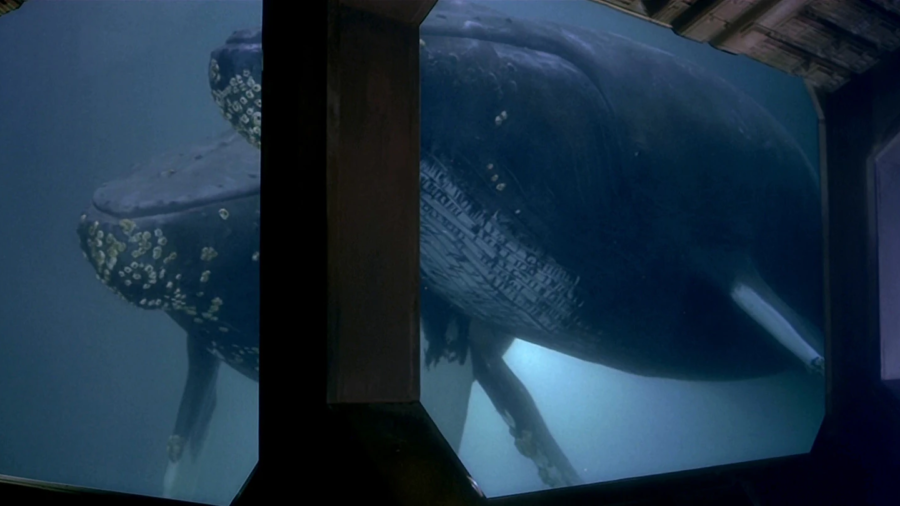Scientists Talk With Whales Leading To Alien Communication

Communicating with aliens in the future may seem like a lofty sci-fi concept, but scientists recently had a 20-minute conversation with a humpback whale, so maybe we’re not as far off as we thought. Scientists from UC Davis, the Alaska Whale Foundation, and SETI (Search for Extraterrestrial Intelligence) teamed up to communicate with a whale named Twain in her own language, and they were successful in their mission. It’s a scientific feat that could hold implications for our future hopes for alien communication.
While whales aren’t aliens, the fact that we’ve had communication with another species may prove that communicating with aliens is indeed possible. To accomplish this landmark scientific achievement, the group took a boat down the coast of Alaska and played a “contact call,” or greeting, to see if any whales were interested in talking back. Contact calls are used by whales to call each other over or to communicate their location to other whales.

Before long, a humpback whale named Twain responded to the call by swimming up to the boat and circling it. The team would then emit the contact call 36 different times at different intervals, and Twain would respond in turn, often matching the intervals closely. In other words, the scientists would do something like wait ten seconds before playing a call to Twain, and she would wait ten seconds before emitting her reply, suggesting that her communication with the team on the boat was intentional.
To effectively communicate with Twain, the researchers collected calls from humpback whales just a day before, and Twain was in the group. Which means it’s possible that Twain was hearing her own contact call. In any case, the communication was successful, and, as mentioned, this could tie in with future alien communication endeavors.
Laurance Doyle, a principal investigator at the SETI Institute and coauthor on the paper, explained the connection to alien communication, saying, “An important assumption of the search for extraterrestrial intelligence is that extraterrestrials will be interested in making contact and so target human receivers,” meaning an early exchange between humanity and aliens could play out much like humanity’s exchange with Twain. Meanwhile, the team at SETI is working with UC Davis and the Alaska Whale Foundation to create filters that could aid in humanity’s search for aliens.
Doyle says, “If extraterrestrials are out there, sending us signals, trying to communicate, we might miss them if we don’t know what to look for.” If they are able to create these filters, it’s possible that we could parse alien signals from space from the usual noise and feedback we pick up when monitoring the cosmos. In other words, it could bring us one step closer to alien communication.
While we wait, possibly for a long time, to achieve alien communication, the team will continue focusing on speaking with our fellow inhabitants here on Earth. After the success of the whale mission, the team hopes to carry out conversations with other intelligent species, such as dolphins and elephants. It will be fascinating to see how this mission advances over the coming years.
Source: Original Study












